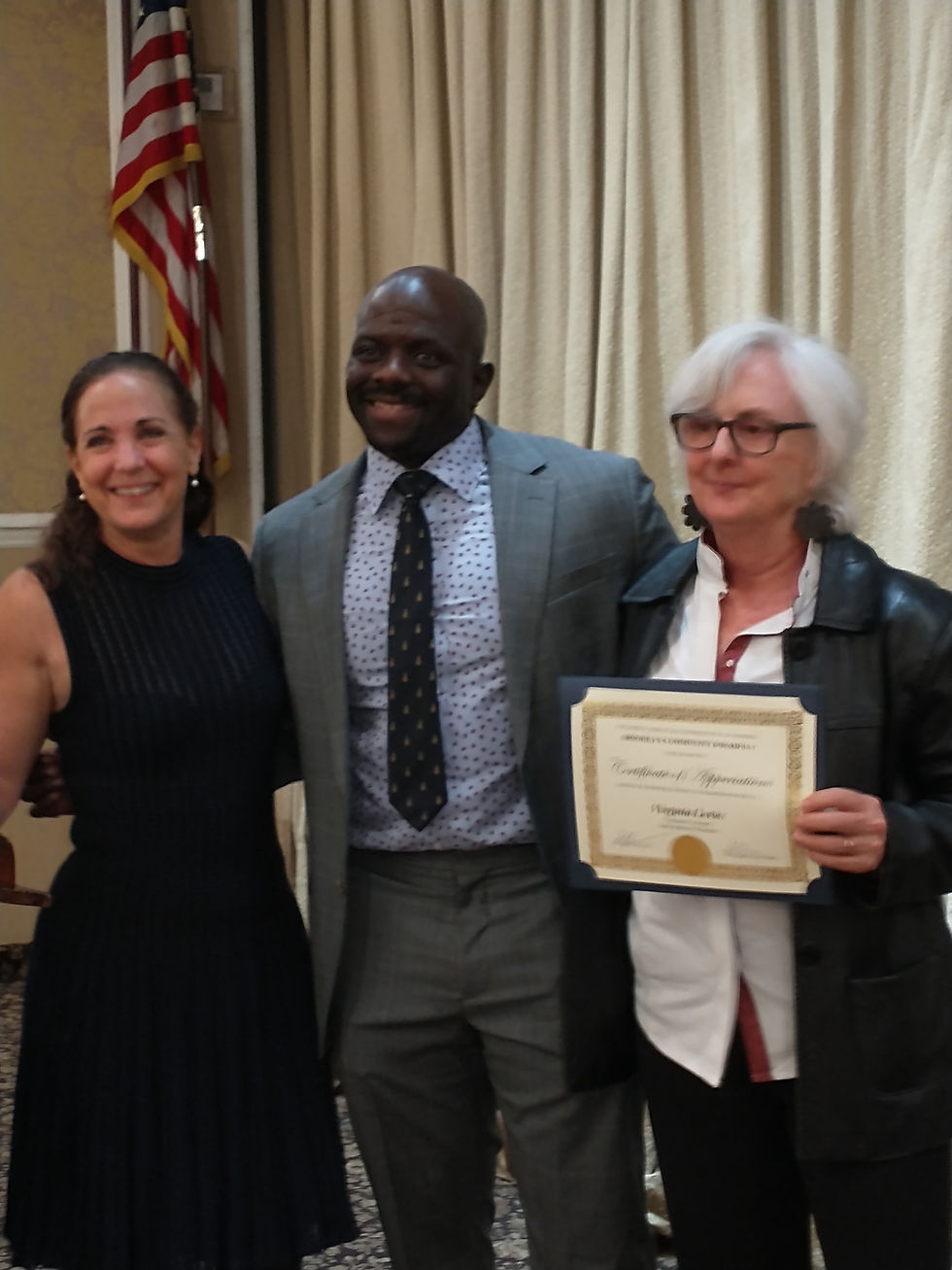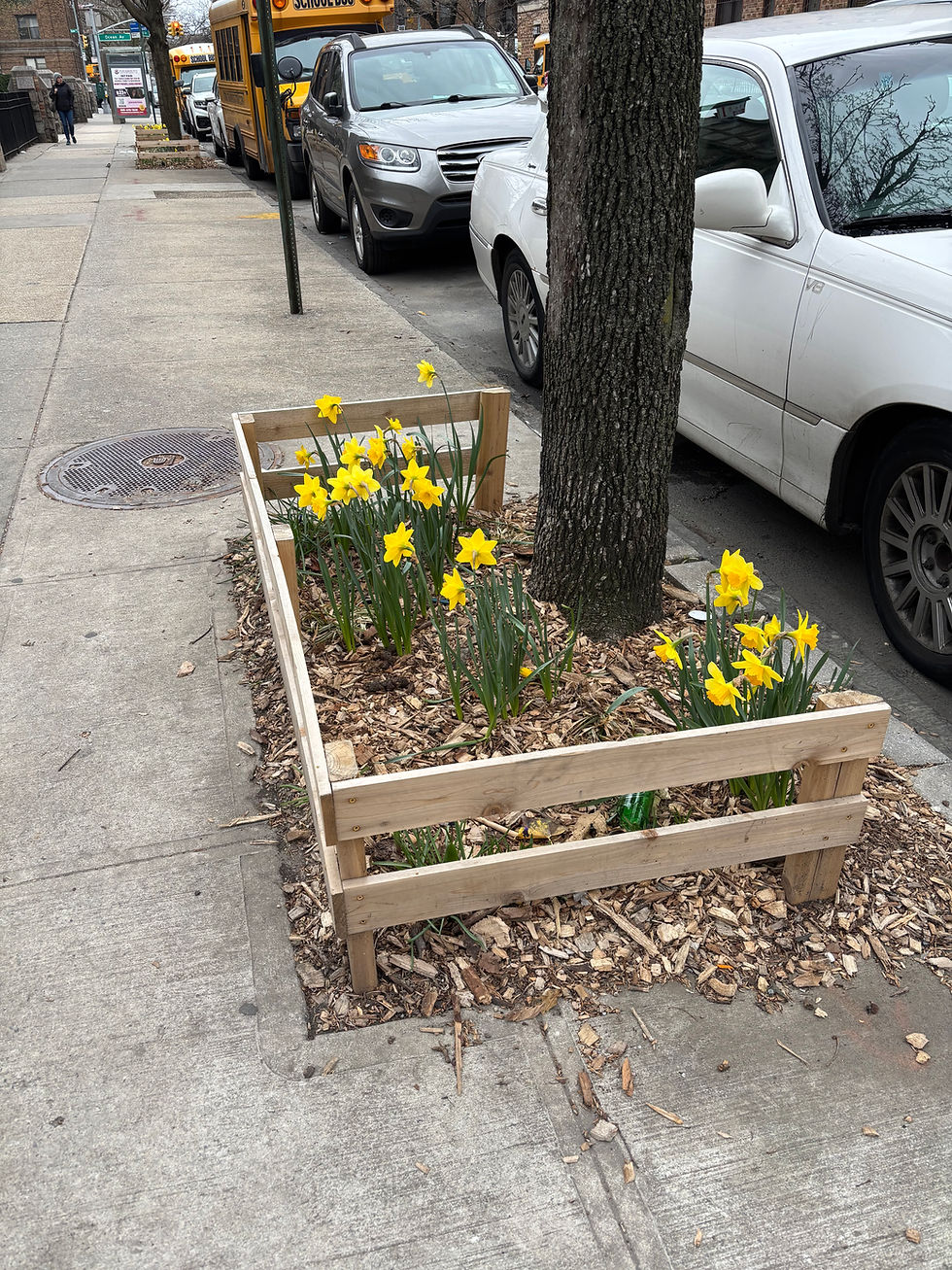5 Keys to Plantings for Pollinators
- southmidwoodpollin
- Feb 1
- 2 min read

In a city like New York, no one garden can probably do everything needed to support wildlife.
But each one of us CAN do something and, all together, we can create a healthy and supportive ecosystem as well as gardens that bring us great joy.
The best news is, there are really only 5 basic concepts you need to embrace to grow effectively for birds and bees.
The FIVE Keys to Planting for Pollinators
1. Plant for a Succession of Bloom – early spring to late fall
2. Plant in clumps so insects and birds can find them
3. Plant a Variety of TYPES of pollinator supporting plants*.
Mix it up – herbs, flowers, fruits, vegetables, trees, woody shrubs
4. NO Pesticides or Herbicides
Pesticides kill all insects, so don’t use them. Herbicides lurk in products offering "weed free" lawns.
5. Don’t be TOO Tidy and Provide Water if you can. Overwintering flower stalks, leaves and sticks all provide vital habitat. Loss of habitat is one of the major causes of insect decline.
*NOT ALL FLOWERING PLANTS ARE USED BY POLLINATORS
Prefer
Native plants over Introduced plants,
Species over Cultivars, and
Cultivars over Hybrids
Do Choose
Simple Flowers (like Black eyed susans or purple coneflower)
over multi-petaled Compound Flowers (most peonies, for example)
Prefer
Natives but don’t get too hung up on it.
Growing Native plants IS very important for biodiversity and for some insects that exclusively feed or host on them. However, sometimes Natives are unavailable or just too expensive.
Never let the Perfect be the enemy of the Good!
For example,

REMEMBER:
Real estate is precious in NYC.
BEFORE sowing a seed or adding a plant to your limited space, try asking yourself:
Will this plant benefit wildlife - either as food, shelter or host plant?
If not, is there a similar plant that I can use instead?

For a complete discussion of these concepts, plus tips on planting for pollinators in containers, tree beds and on the cheap, check out the PDF below of the complete.
Onward and upward, Virginia




Comments